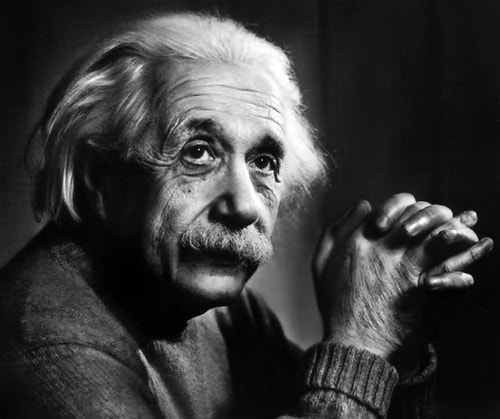General Relativity Turns 100
November 25, 2015

Albert Einstein (Credit © AF Archive/Alamy Images)
Today marks the 100th anniversary of the publication of Albert Einstein’s general theory of relativity. The German-born physicist presented the mathematical equations for his theory at the Prussian Academy in November 1915. The theory explains how the force of gravity emerges from the curvature of space and time.
Einstein’s theory explains many puzzling facts about the universe. It shows how the presence of matter and energy distorts (twists) the shape of space and time. General relativity also predicts the existence of such unusual phenomena as black holes—objects with so much concentrated mass that nothing, not even light, can escape the distorted space around them.
General relativity is actually the second of Einstein’s “theories of relativity.” He published the first, called special relativity, in 1905. Special relativity explains the relationship between matter and energy—popularized with the equation E = mc-squared (also written E= mc2)—and shows that nothing can travel faster than the speed of light (in a vacuum, that speed is 186,282 miles, or 299,792 kilometers, per second). But special relativity did not explain how gravity can act upon objects at a distance. Previously, gravity was understood in terms of the law of gravitation proposed by the English scientist Isaac Newton in the 1600’s. Newton thought that gravity acted instantaneously across space. But according to special relativity, nothing—not even the attractive force of gravity—can travel faster than light.
Newton believed that space and time were unchanging, or “flat.” Special relativity showed that space and time were deeply connected, and in fact could be thought of as a single substance called spacetime. With special relativity, Einstein showed how people’s experience of space and time could shift depending on their speed—a clock on a fast spaceship, for example, would count fewer seconds than a clock on a slow spaceship. With general relativity, Einstein proposed that spacetime itself can change its shape. It is not always “flat,” but rather it distorts in the presence of matter and energy. Massive objects create massive distortion in spacetime, or “gravity wells,” into which nearby objects may fall.
To understand how gravity arises from distorted spacetime, imagine a number of marbles placed on a soft bed. Each marble creates a small indentation beneath it, warping the bed’s otherwise flat surface. If a bowling ball is placed in the center of the bed, the ball’s mass creates a huge indentation, and the surface distorts so much that nearby marbles may roll and fall into the bowling ball’s indentation. This comparison is incomplete, however—in general relativity, matter and energy cause distortions in three-dimensional space, and even in time.
In 1916, Einstein’s complete theory of general relativity was published in the Annalen der Physik (Annals of Physics, a scientific journal published since 1799.) Einstein suggested that his theory could be proved by observing light from distant stars during a solar eclipse. The sun’s mass, he predicted, would distort spacetime around it so that light rays from the stars appeared to bend as they passed nearby. In 1919, astronomers saw just such an effect of starlight during an eclipse, confirming Einstein’s theory.
General relativity remains the best explanation in physics for the behavior of the universe at large scales. But at the smallest scales, such as inside the nuclei (cores) of atoms, the laws of general relativity break down. At such scales, the universe obeys a different set of rules—quantum mechanics, which lacks a good description of gravity. Resolving the contradictions between general relativity and quantum mechanics remains one of the biggest goals in physics.
Other World Book articles


